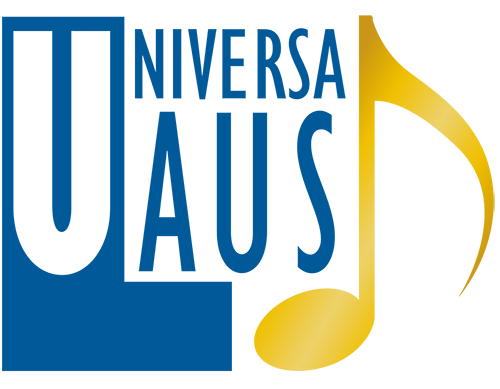UNIVERSA LAUS
(literally “Universal Praise” in Latin). International study group for liturgical singing and instrumental music, formally constituted at Lugano, Switzerland in April 1966, based on a group of European liturgists and musicologists that had first started meeting in 1962 (though some of its members had been working together for a decade before that). The initial object was to support the work of those charged with presenting and then implementing the liturgical reforms of the Second Vatican Council; some of its members were in fact periti at the Council. The first trio of presidents were Joseph Gelineau (France), Erhard Quack (Germany) and Luigi Agustoni (Italian-speaking Switzerland). Other distinguished names present at the first formal meeting of the association included Helmut Hucke, Bernard Huijbers, David Julien and René Reboud.
Meetings are open to all, but membership is only granted after attendance at three international meetings (national section meetings are also regularly held in some countries). The organization has comprised members from many of the European countries, and meetings normally take place in one of those countries – England, France, Germany, Netherlands, Switzerland, Italy, occasionally Spain, Belgium. In the mid-1970s the first Australian member was admitted, in the early 1980s the first North American (there are currently a number of other US members), and in the late 1990s two members from South America). The first US meeting took place in Stamford, CT in 1996, and a meeting in Montréal, PQ followed in 2001. Membership is mostly Roman Catholic, though a small number of members has consistently come from other Christian churches (e.g. Lutheran), and includes both ordained pastors and lay people. Visitors have come to occasional meetings from much further afield (e.g. Africa, India). In the wake of the breaking-down of the Iron Curtain, participants from Eastern Europe arrived in the late 1990s and the first Russian participant was welcomed in 2000. The balance of liturgist-musicians, musicologists and pastoral musicians has varied over the course of time; but liturgical competence is assumed in all categories.
During the first period in the group’s existence (1962-1968), work was concentrated on the ritual function of music in liturgy, and the relationship between form-function-signification. From 1969 to 1976, the group moved into a systematic study of the actual functioning of music in liturgy, and the impact of different cultural situations on worship. This led not only to two other triads (form-functioning-signification and music-rite-culture) but to cross-fertilization with other academic disciplines such as cultural anthropology, social psychology, semiology, and linguistics. In these first two periods, Universa Laus alternated between “working meetings”, with 30-50 participants, and “congresses”, numbering up to 200-300 and drawing in participants from the local region or country. These periods were also characterized by a massive but mostly unperceived influence on the post-conciliar liturgical reforms and their subsequent development through the large number of writings and teachings of the more prominent members of the association, and this influence continues to this day. In almost all cases these activities of UL members are not carried out under a UL banner, since most of the members already have high-profile national roles in their own countries. The principal journals in which Universa Laus papers can be found in English are Music and Liturgy (UK) and Pastoral Music (US); and many other writings by UL authors will be found in these journals as well as in French, German, Italian and Dutch periodicals.
In addition to much mutual exchange of information about what is taking place other countries, and the celebration of liturgies using the language and repertoire of those countries, substantial papers have been given on a wide variety of topics. From time to time over the past 25 years entire meetings have been devoted to working at a single theme – the Eucharistic Prayer, the litany form, the Fraction Rite, acclamation as a form, the Presentation of the Gifts, appropriate vocal production for liturgy, etc. The in-depth treatment from historical and different cultural viewpoints has been exceptionally beneficial.
In 1977, catalyzed by a public debate (and disagreement) over matters of fundamental principle between Joseph Gelineau and Bernard Huijbers, Universa Laus decided to commence work on a document which could at least express the beliefs that members held in common. The resulting UL document finally saw the light of day in 1980 under the title Music in Christian Celebration. Among other groundbreaking insights, it first proposed the notion of “Christian ritual music” – a more focused description than sacred music, or church music, or indeed liturgical music (= the US term “musical liturgy”), and one which would be explored further in the ten-year report on the Milwaukee Symposia for Church Composers (The Pastoral Press/Liturgy Training Publications, 1992). The years following publication of the UL document were an opportunity for unpacking its riches at local level. In 1988 a book-length exposition of the document by Claude Duchesneau and Michel Veuthey was published in French, translated into English as Music and Liturgy – the Universa Laus Document and Commentary (trans. Paul Inwood, The Pastoral Press, 1992).
In the mid-1990s, Universa Laus began to prepare a second document, Music in Christian liturgies, which was published in 2002. In 2003, new members joined Universa Laus from Eastern Europe.
Paul Inwood
[Liturgist, composer and former English-language president of Universa Laus (1986-1998)]
